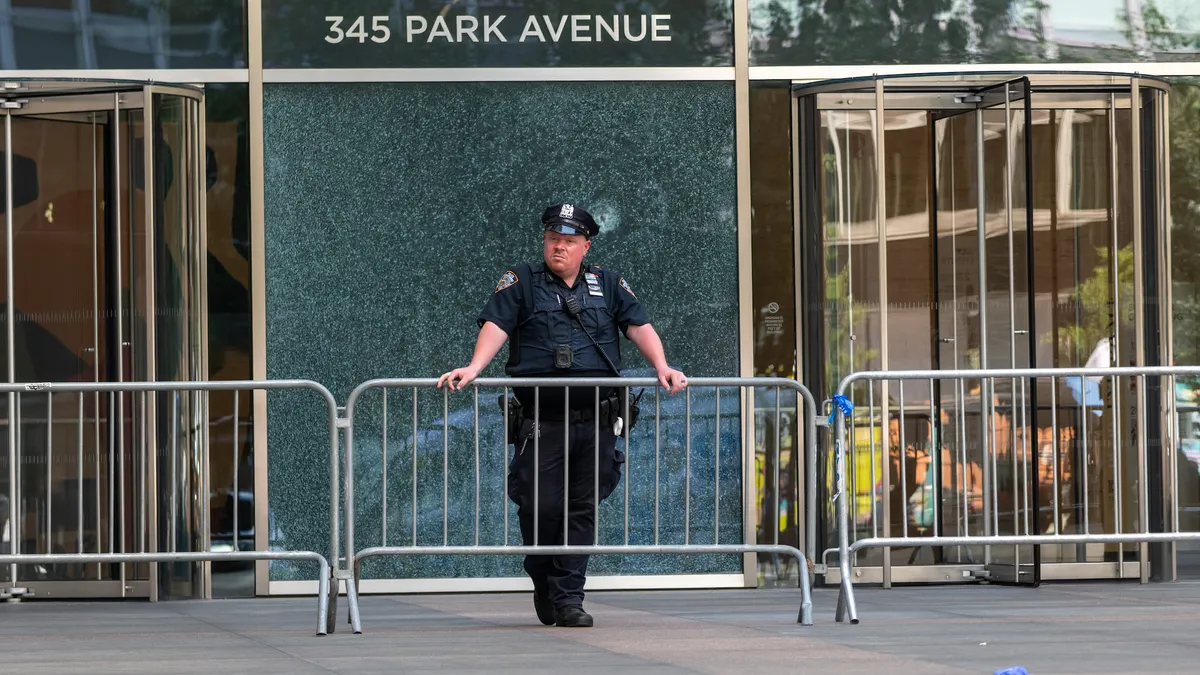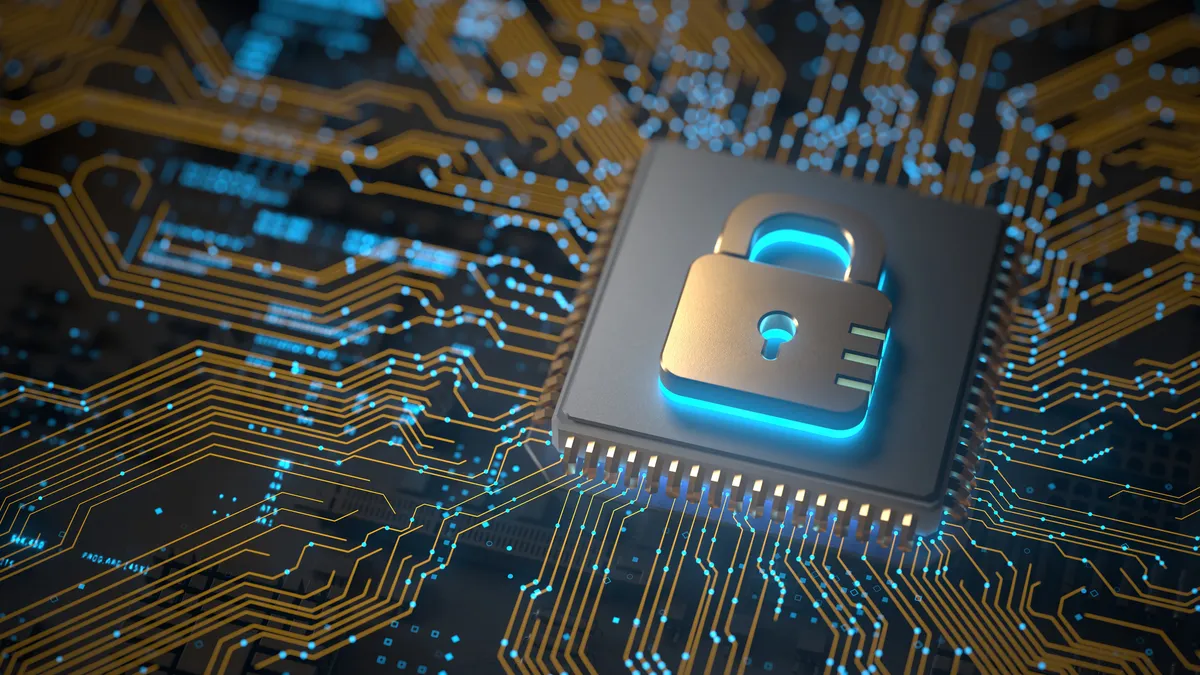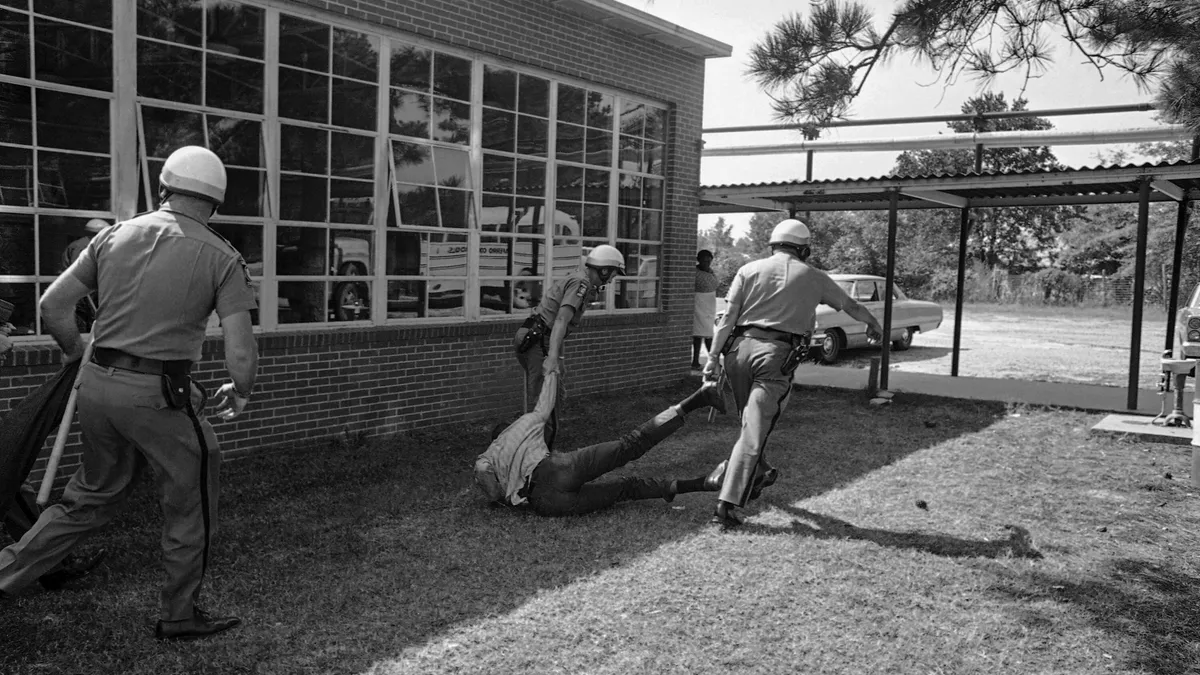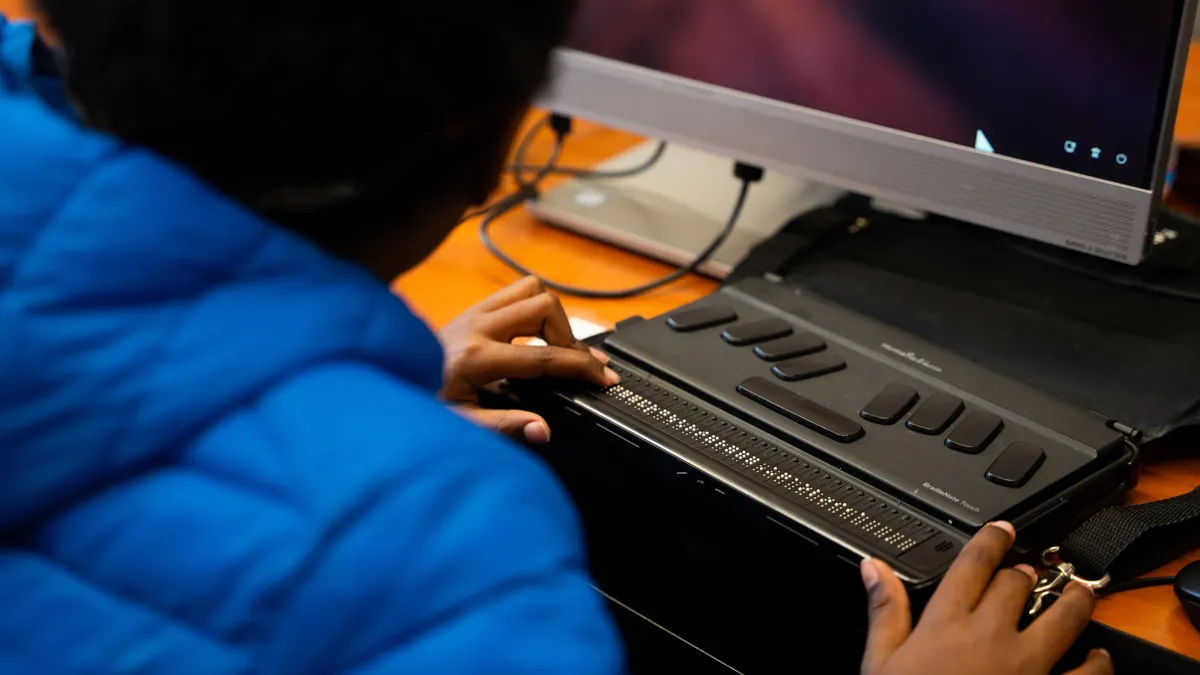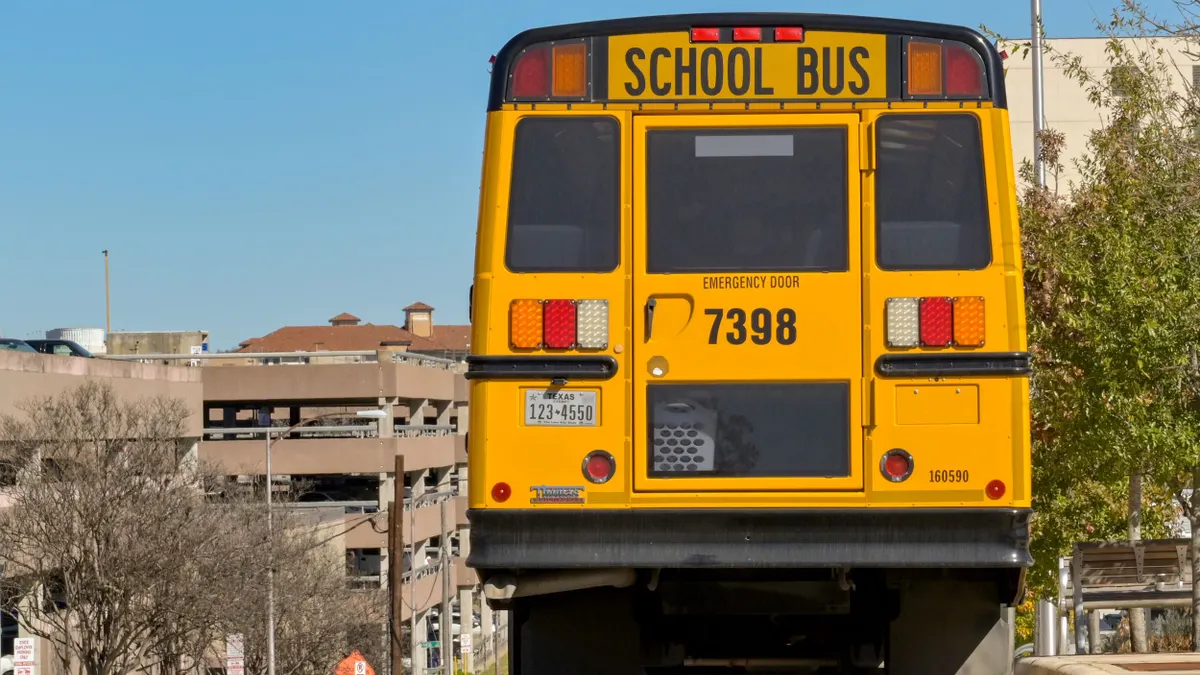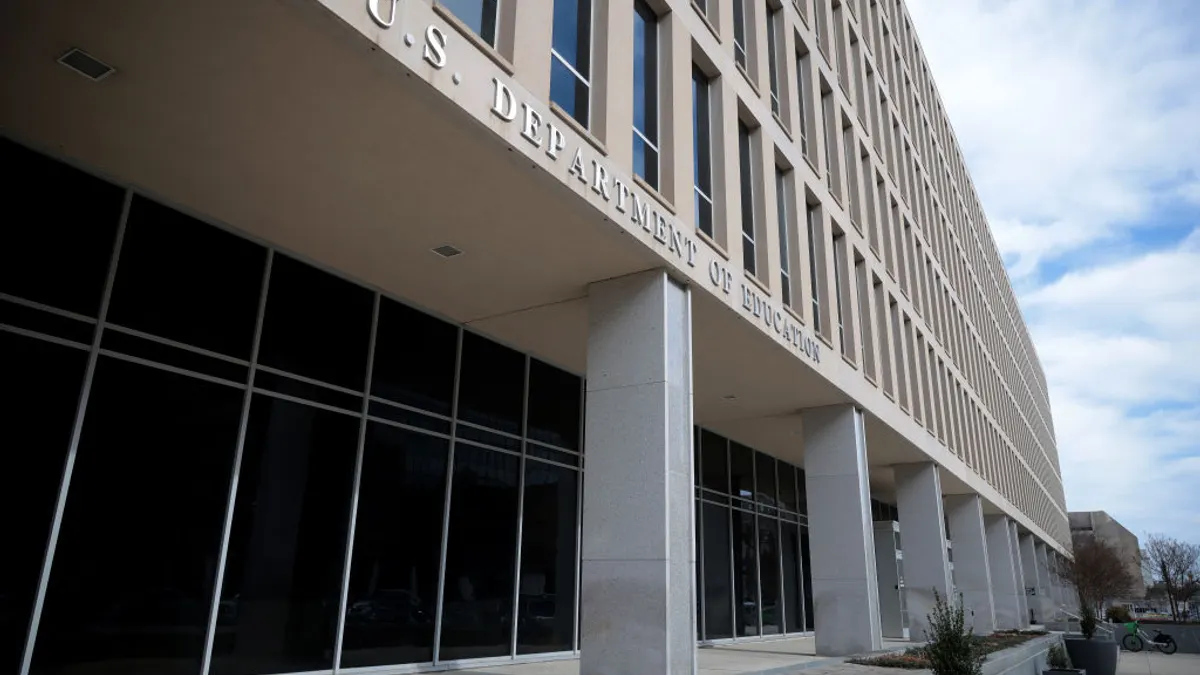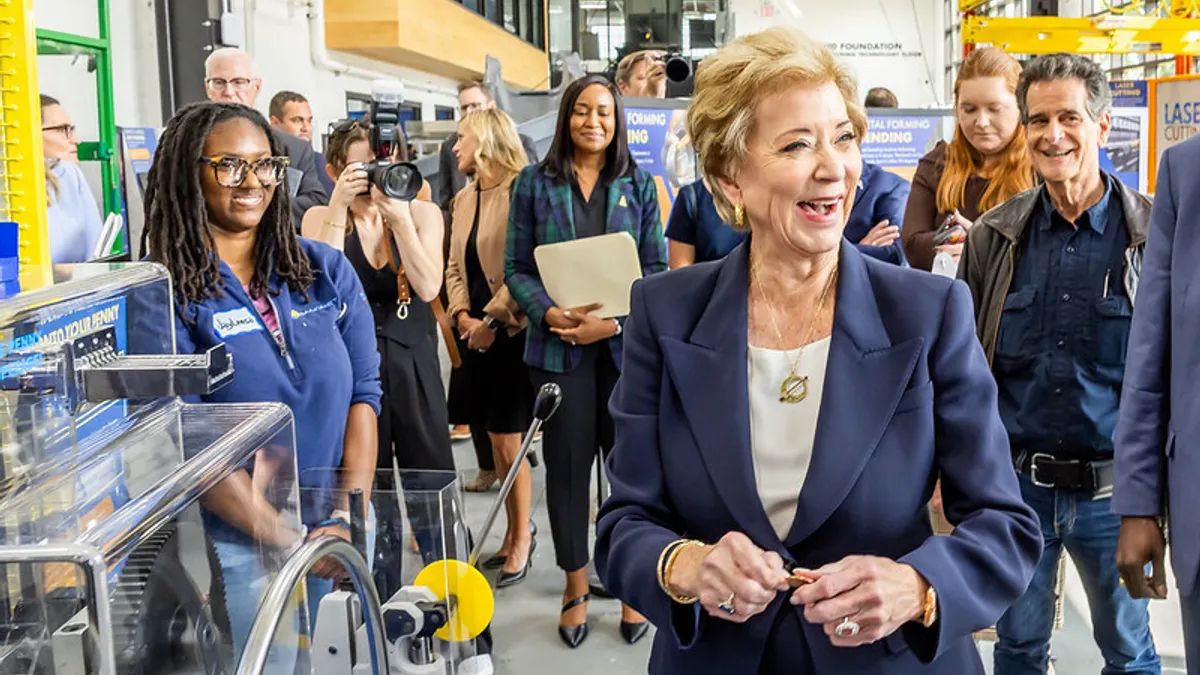Last month's mass shooting in New York City, like every mass shooting incident, is yet another wake-up call to education leaders and school safety experts about how to better protect their buildings and therefore the students and staff inside. This story, from our sister publication Facilities Dive, provides insight into how commercial facilities operators are responding, with takeaways for the education sector.
The mass shooting that took place in Midtown Manhattan last month, which resulted in the deaths of a police officer and three others, puts a spotlight on how building operators can protect occupants in the face of armed assailants. The incident makes clear that access control is a critical factor, but not all access systems are the same, security specialists say.
Prior to the assailant entering the office skyscraper’s lobby and beginning his attack, cameras at 345 Park Avenue flagged the approaching gunman as a potential threat, Reuters reported.
A still frame of closed circuit television footage the outlet obtained, time-stamped just over a minute before police received the first emergency call about the shooting, shows a man holding an assault-style rifle at his side. The photo shows a yellow box around the figure generated by the building’s security system, which analyzes live video feeds for threats requiring instant action. The system was supposed to alert guards at the front security desk, a former federal official told Reuters.
Protecting building occupants in the case of an emergency starts with access control, especially in the case of an active shooter, according to Josh Sullivan, chief operating officer of the ALIVE Active Shooter Survival Training Program, which shares best practices with organizations on responding to threats.
“Access control and the physical security measures in place can prevent a lot of things from happening in the first place,” Sullivan said. “There are multiple ways. No. 1, they have systems out there, like the one that was in place [at 345 Park Avenue] that just didn’t get used properly.”
Software is available that can connect to cameras, identify threats and lock down access controls, doors and other systems, Sullivan said. The software can also notify local authorities or call 911.
“Those things save valuable time,” he said. In some cases, the software automatically provides the security system login to the emergency dispatchers, who can provide it to the first responders, giving them “access to the camera's live feed, more plans and to where things are in the building.”
The technology is only part of the equation, however, Matthew Dumpert, global leader of enterprise security risk management at financial and risk advisory firm Kroll, told Reuters. “It takes significant resources, alarms to notify people [and] training to recognize it,” he said.
Considering the rate of active threats today, allocating those resources and having a plan is increasingly important for facilities managers, Sullivan says.
The OSHA general duty clause says that employers must take reasonable actions to ensure the safety of employees or guests from recognized hazards that are “likely to cause death or serious physical harm.”
“An active shooter, unfortunately in today’s world, is a common hazard,” Sullivan said. “It’s No. 3 overall in any workplace as the cause of injury or death. In healthcare and education, it’s No. 1.”
Stagnant technologies leave gaps in security
Many organizations use access control technologies that are outdated, improperly configured or insecure, according to Tina D’Agostin, CEO of Alcatraz AI, a company that provides facial authentication hardware and software solutions to enterprise clients.
“When you look at what is deployed today, 90% of it is still badges and proximity cards,” said D’Agostin, noting that the first access card technology was released in 1983, with little innovation since. “Imagine using a TV or phone from the ’80s. That’s essentially what we’re doing in access control. In no other area of life would that be allowed to happen.”
Among their weaknesses, these cards can be easily cloned, she said.
Facility managers might want to look at other technologies, including mobile technologies and biometric-based systems, she said. Each has its pros and cons, she said.
Among their cons, mobile devices are carried, just like an access card, so they can be lost, and using biometrics requires a trade-off between friction and convenience, she said.
Separate from these issues is the problem of tailgating, where unknown actors follow authorized employees or occupants into a space, bypassing access controls.
Tailgating is the No. 1 cause of a security breach, and it’s usually not very elaborate, D’Agostin said. “It’s a courteous human being holding the door open for someone who is unauthorized that goes in to be a bad actor,” she said. “All the other technologies do not protect against that. If you have a technology at the door, and someone holds that door open, the whole system is defeated.”
Going forward, building operators should treat active shooter threats as seriously as they do fire evacuations and other safety matters, Sullivan said.
“If they even touch on [active threat situations] at all, it's very minimal,” he said. “Most companies out there don't touch on — or don't touch enough on — the active threat space. The workplace violence space needs to really [be taken] seriously.


